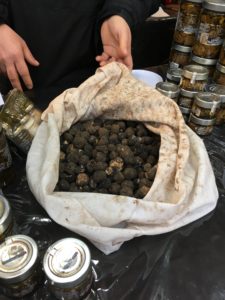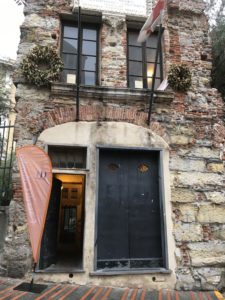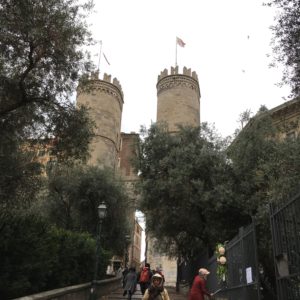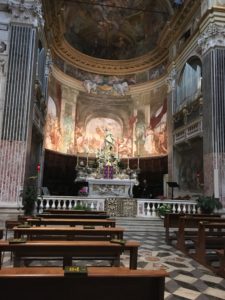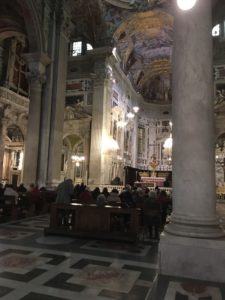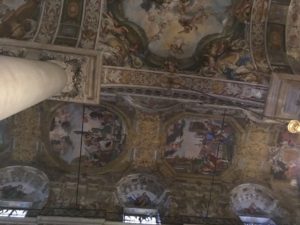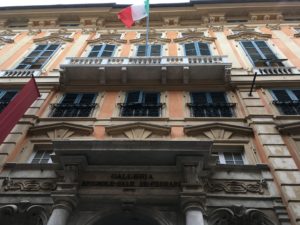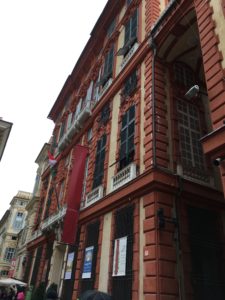We arrived in Genoa to cloudy skies. The walk from the boat to the city center is about 15 min along the harbor.
The first Palazzo we passed was San Giorgio, built in 1260 by Guglielmo Boccanegra, uncle of the first Doge of Genoa.
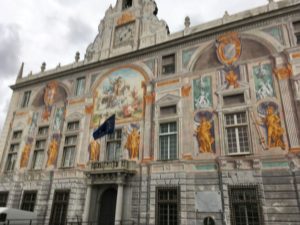 It was built from materials salvaged from the Venetian Embassy in Constantinople. It was later used as a prison where Marco Polo spent several years and dedicated his memoirs to Rustichello of Pisa.
It was built from materials salvaged from the Venetian Embassy in Constantinople. It was later used as a prison where Marco Polo spent several years and dedicated his memoirs to Rustichello of Pisa.
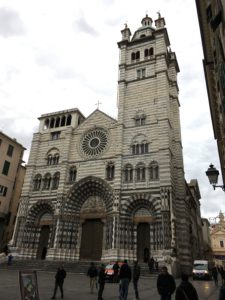 Cattedrale di San Lorenzo was begun in the 5th or 6th century, but excavations show Roman sarcophagi. The current cathedral was built between 12th and 14th centuries, (current walls built in 1155). The naves is Romanesque but the façade is Gothic. The piazza was the only public space in the city during the Middle Ages.
Cattedrale di San Lorenzo was begun in the 5th or 6th century, but excavations show Roman sarcophagi. The current cathedral was built between 12th and 14th centuries, (current walls built in 1155). The naves is Romanesque but the façade is Gothic. The piazza was the only public space in the city during the Middle Ages.
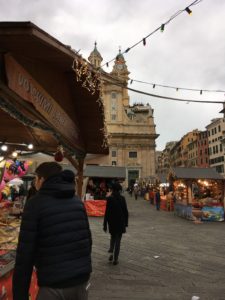 Christmas markets were set up in many of the squares, and we saw lots of fresh truffles for sale.
Christmas markets were set up in many of the squares, and we saw lots of fresh truffles for sale.
Unfotunately, it started to drizzle in mid morning and temperatures were in the forties, so it was chilly, but we very much enjoyed walking the old city with its narrow, curving streets and churches hidden away on almost every squre.
The city walls date back to the 12-17th centuries. We saw the two remaining gates, Porta Soprana next to the Christopher Columbus house.
Palazo Ducale (Palace of the Doges) was the home of the Doges of Genoa. The first parts of the palace were built in 1251 and 1275. The Torre del Popolo was buil tin 1539. Today it houses art exhibits.
On the way up to Via Garibaldi, we passed the Church of San Luca on the Piazza Banchi.
A little further up, we popped in to the church of San Siro and witnessed a service.
On the Via Garibaldi, we saw two palazzo that date back to the mid 16th century that are now art galleries, Palazzo Bianco and Palazzo Rosso
Because of the rain and cold, we headed back to the boat around noon but we were able to see everything we wanted to in three hours of walking.




